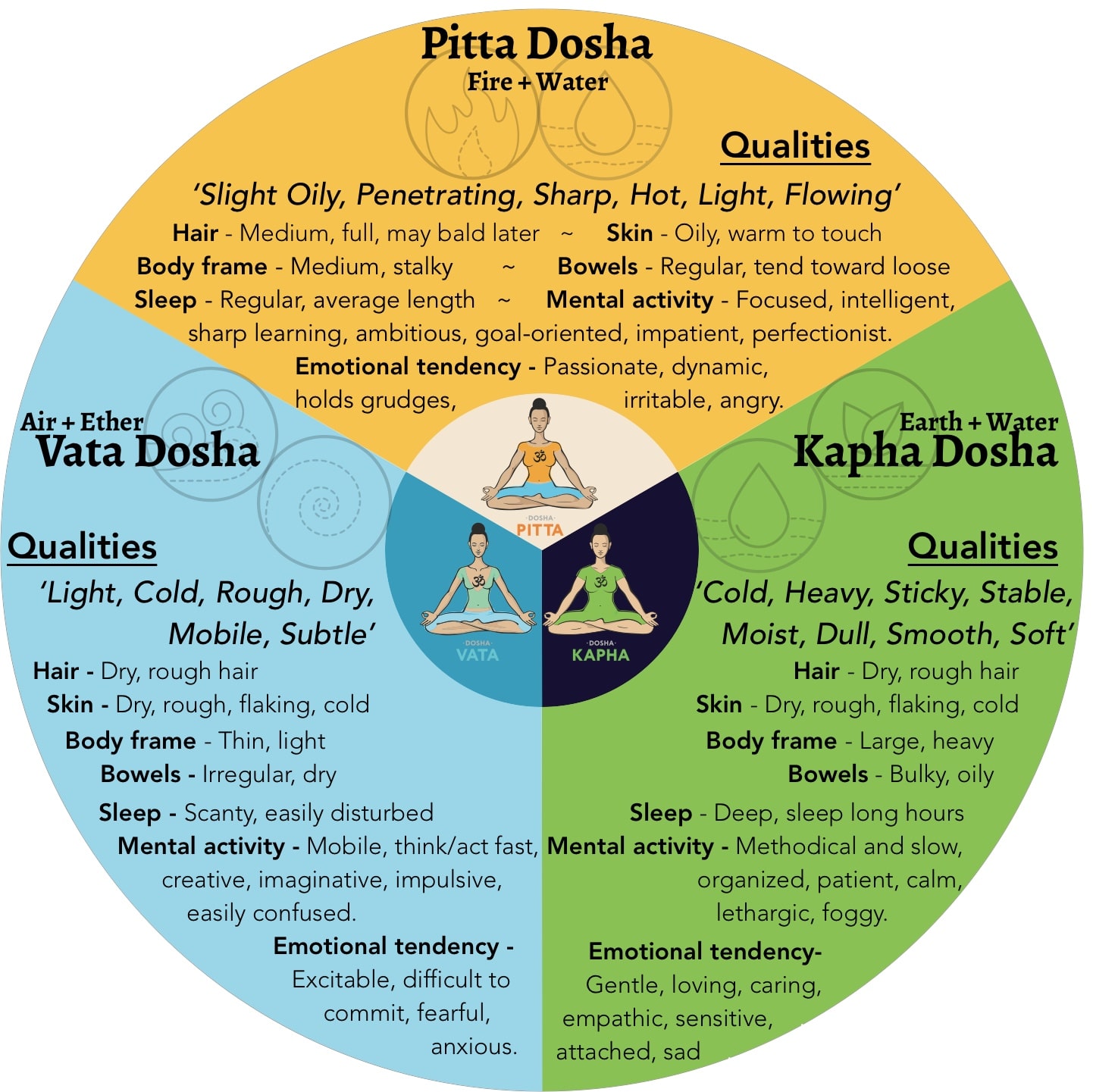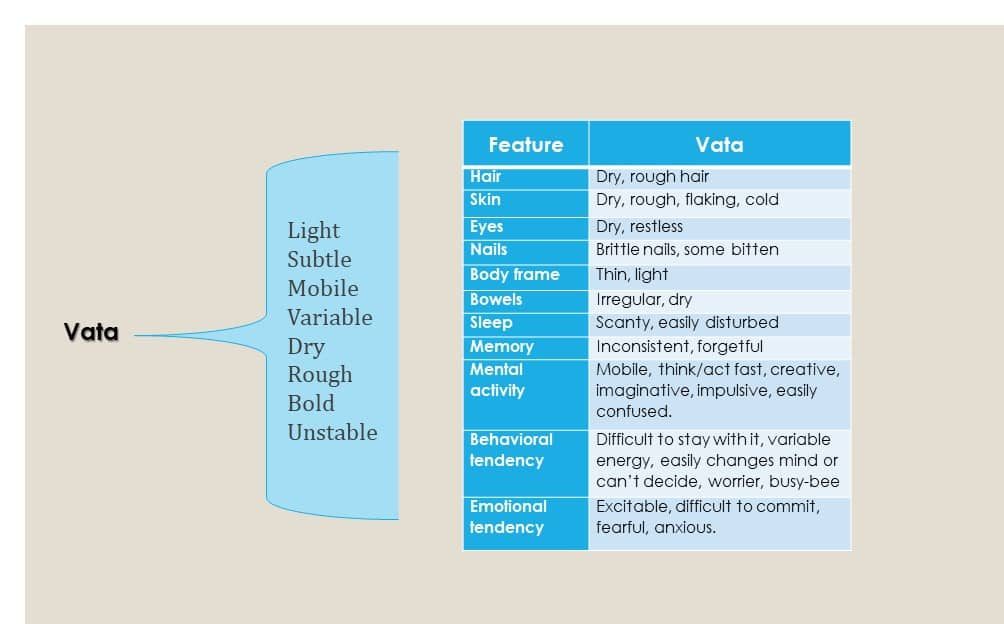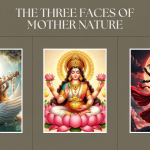One of the many strengths of Ayurveda arises from it’s ability to individuate and customize recommendations for the individual person. In this way, each one of us is treated as unique and treated as a whole. Understanding the Ayurvedic body type or Ayurvedic constitution is a powerful tool. It is an essential requirement to adopt the principles of Ayurveda into your life.
Your Ayurvedic constitution varies based on the combination of elements that form your subtle body. These elements give rise doshas, Vata, Pitta, and Kapha, that govern the physical and functional manifestation of the body.
As discussed in previous articles, when doshas are in balance, they contribute to healthy structures and efficient functions. Imbalance leads to disease. Knowing your Ayurvedic constitution, you gain the understanding of what are your “normal” structural, functional, and psychological tendencies. You can observe how these are affected when you are out of balance… Ultimately, as you begin to understand principles of balance, you can cultivate health and wellbeing by the means of your daily practices, diet, and mental-emotional attitudes.
Ayurvedic constitutions fall in following 7 major categories:
- Vata-dominant
- Pitta-dominant
- Kapha-dominant
- Vata-pitta dominant
- Kapha-vata dominant
- Pitta-kapha dominant
- Tridoshic (equal dominance of Vata-pitta-kapha)
To simplify our discussion let us first look at individual dosha-dominant constitution:
Vata-dominant Constitution:
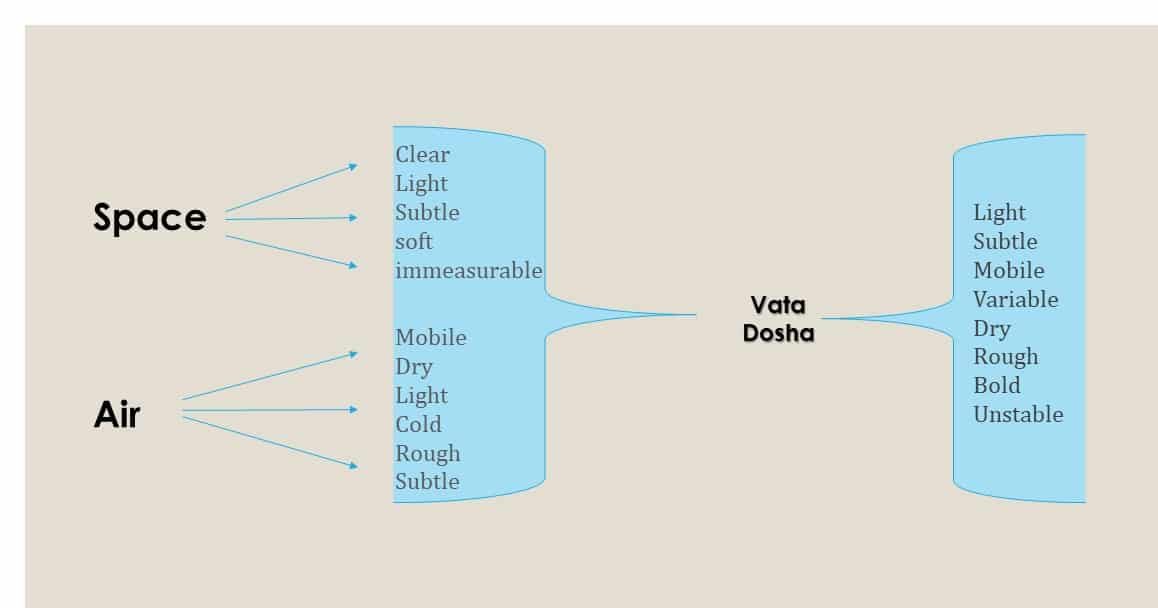
Check out this video for a detailed representation of Vata-dominant body type and their physical, mental, and emotional traits:https://youtu.be/CIBtX7Su6bg
**Certain traits of vata dominance, like dryness of tissues, anxiety, mind racing, etc. can also be seen in individuals of other constitution who have a Vata aggravation. We will deal with these complexities in later articles.
Pitta-dominant Constitution:
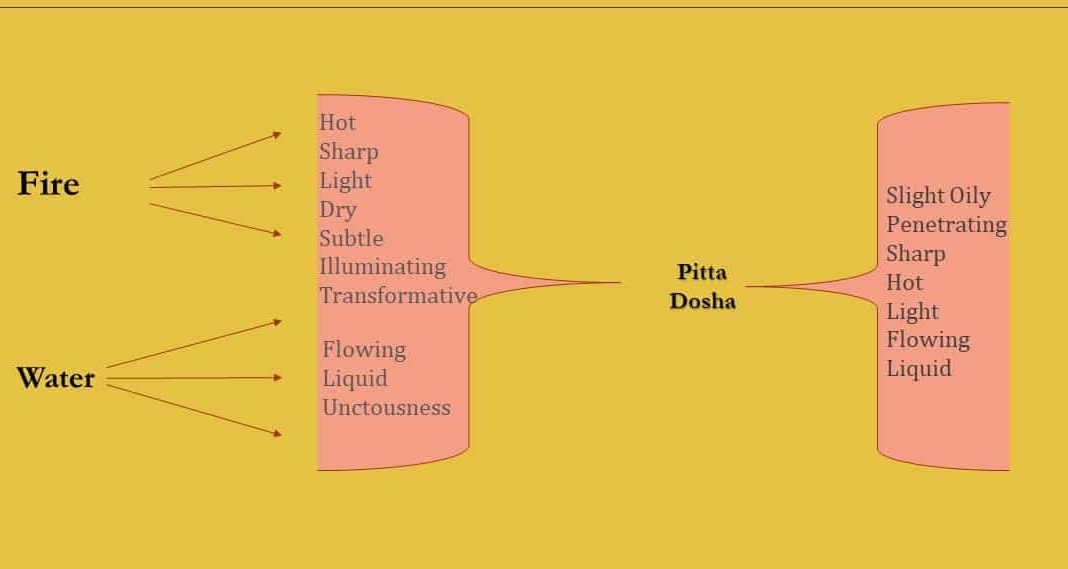
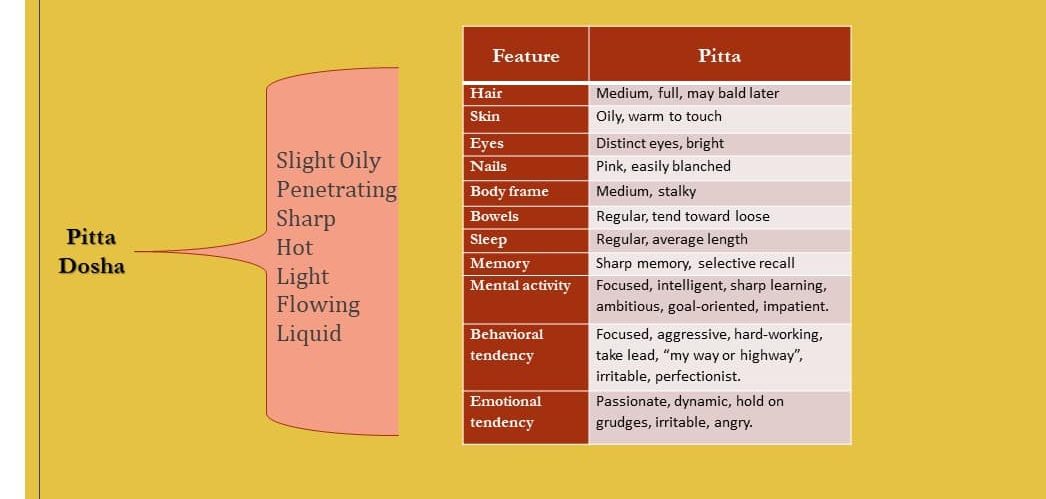
**Certain traits of pitta dominance, like hot body temperature, sensitivity to heat, anger and irritability can also be seen in individuals of other constitution who have a Pitta aggravation like fevers, inflammation, liver toxicity, etc. We will deal with these complexities in later articles.
Kapha-dominant Constitution:

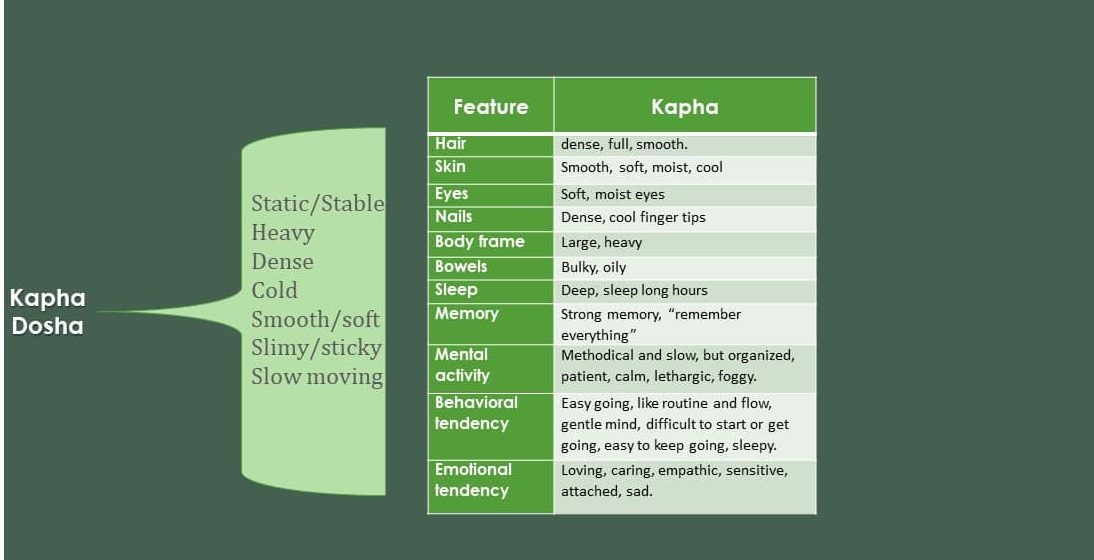
**Certain traits of kapha dominance, like water-retention, heavy weight, mental fog, and lethargy can also be seen in individuals of other constitution who have a Kapha aggravations caused by Ama (toxic accumulations), channel blockages, etc. We will deal with these complexities in later articles.
About Dual-dosha and Tri-dosha Constitutions:
Individuals with duel dosha are far more common than individuals with single-dosha and tri-dosha constitutions. Therefore, learning about individual dosha types is a crude tool to start thinking about individuality. Like all aspect of Ayurveda, understanding your living constitution require keen observation of the qualities of the elements that are being represented. The reason of this is we are dynamic and ever-change state while we are alive.
So, even in dual-dosha constitution and tri-dosha constitution one dosha might dominate over others depending on the season, the day or the environment. For example, in a Vata-Pitta constitution, Vata-dosha or vata aggravation may predominate in the fall and winter seasons. While Pitta dosha or pitta aggravations predominate in Summer season. Furthermore, certain dual-constitution individuals will have slightly more dominance of one dosha and slightly less prevalence of the other dosha. For examples, and individual might show 45% traits of Vata, 35% traits of Pitta, 20% traits of Kapha… A Kapha-Pitta individual might represent 50% Pitta traits and 35% Kapha traits in the Summer season; then, change to represent 50% Kapha traits and 35% Pitta traits in the Winter season.
The variations are very individualistic and must be observed through lived experience. It might take you a whole year or few years to observe closely all the factors that affect you and how you change based on time of day, seasonal factors, or environmental factors. This is a worthwhile journey because even starting on the first day of observing yourself, you can start assessing what feels in balance or out of balance in your constitution. As you feel more confident over a few days or few months of observations, you can meticulously start to experiment with Ayurvedic diet, lifestyle and daily routines to gain health and resilience.
Learn more about Ayurveda
Meet Dr. Anup
Check out our Podcast on Spotify and Apple Podcast

